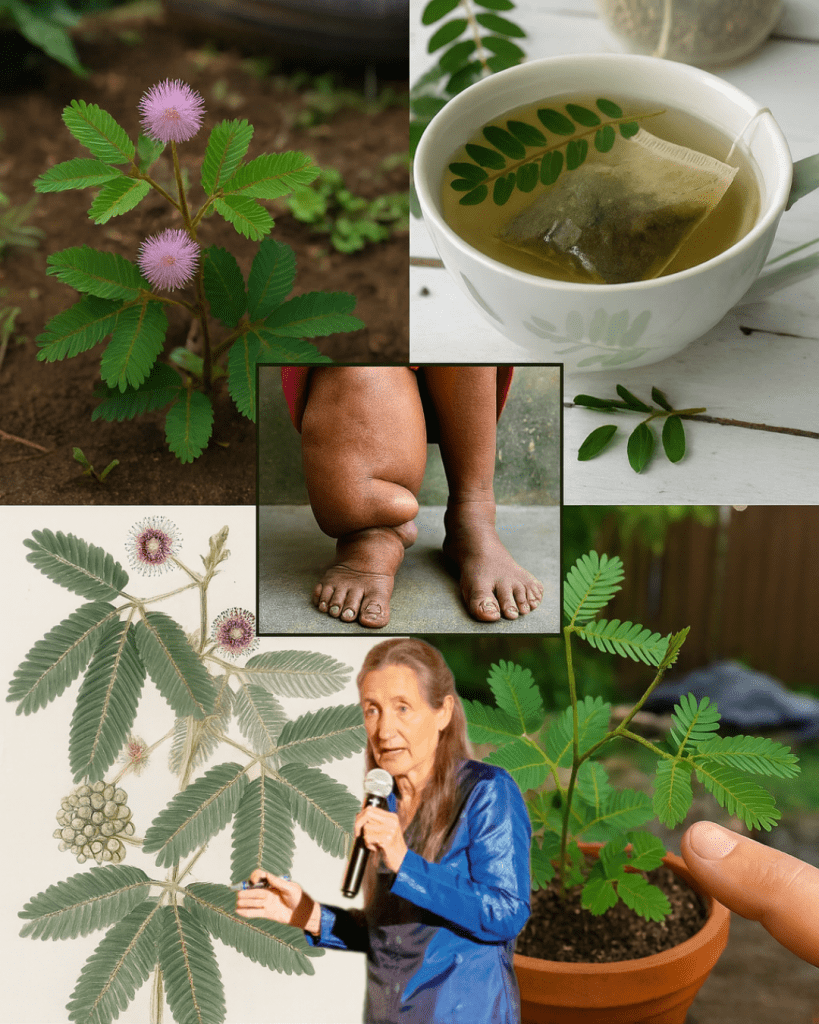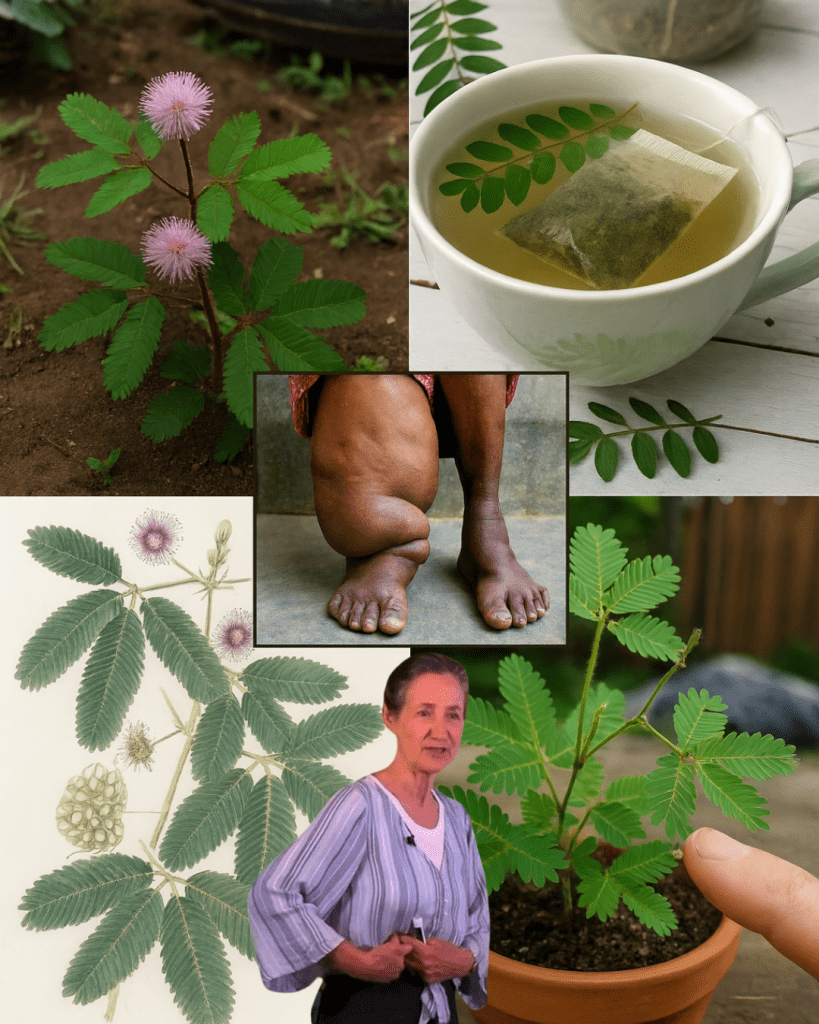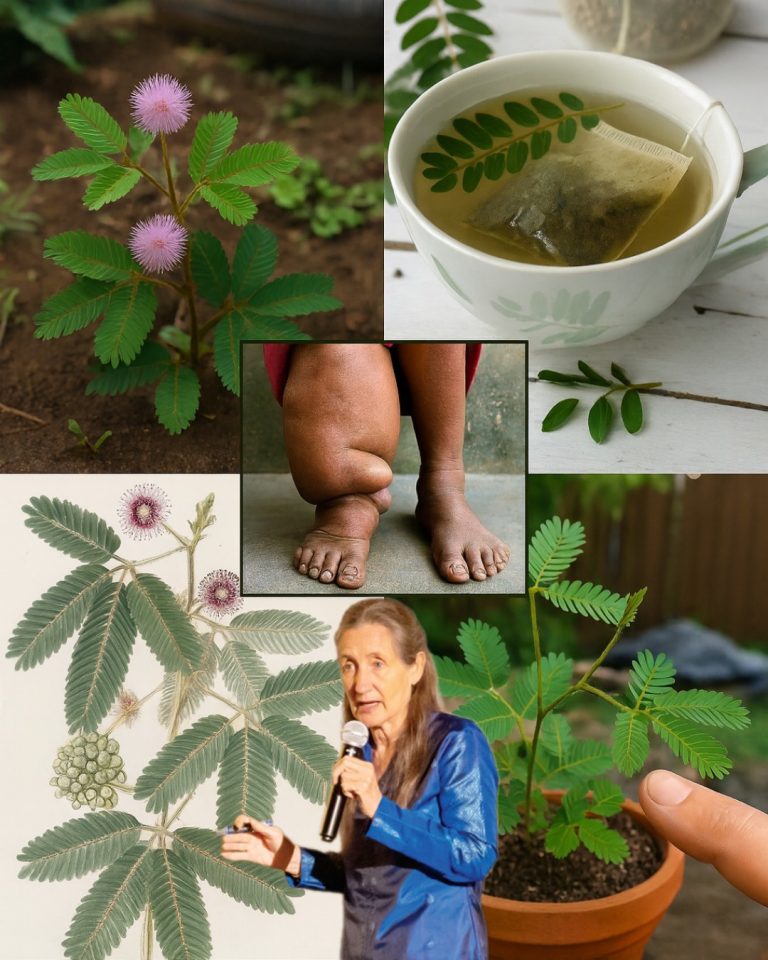What if a plant that shyly folds its leaves at your touch could boldly transform your wellness? Mimosa pudica, the “touch-me-not” or “sensitive plant,” is stealing the spotlight in holistic health circles across America. Known as lajjalu in Ayurveda, this fern-like herb from South and Central America is more than a botanical curiosity—it’s a powerhouse of bioactive compounds like mimosine, flavonoids, and tannins. From cleansing your gut to easing joint pain and lifting your mood, Mimosa pudica offers a natural, affordable way to thrive. Ready to uncover its secrets? Dive into seven science-backed benefits, learn safe usage tips, and see why this plant is captivating health enthusiasts everywhere.

Meet Mimosa Pudica: Nature’s Sensitive Superstar
🌱 Mimosa pudica thrives in tropical regions, from India to the Philippines, and maybe even your backyard. Its thigmonastic movement—leaves folding inward when touched—protects it from herbivores and sparks curiosity. But its real magic lies in its phytochemicals, including alkaloids, flavonoids, and mucilage, which fuel its medicinal potential. Used for centuries in Ayurveda to treat digestive issues, skin woes, and stress, recent studies, like those in Pharmacognosy Research (2016), confirm its antioxidant, anti-inflammatory, and antimicrobial properties. This shy plant is a bold ally for seniors, wellness seekers, or anyone craving natural vitality.
7 Remarkable Benefits of Mimosa Pudica
🥗 Cleanses Your Gut for Optimal Digestion
Mimosa pudica’s seeds produce a mucilaginous gel that acts like a natural sponge, binding toxins, bacteria, and parasites in the gut. A 2016 study found this mucilage supports digestive health, easing bloating, constipation, and IBS symptoms.
Why It Matters: A cleaner gut improves nutrient absorption, reduces digestive discomfort, and boosts energy, perfect for those feeling sluggish.
How to Use: Sip 1 cup of tea made from 1–2 teaspoons of dried leaves or take 500 mg seed powder capsules daily before meals.
🔥 Soothes Inflammation and Joint Pain
Flavonoids and tannins in Mimosa pudica reduce inflammation, offering relief for arthritis or muscle soreness. A 2012 study in Phytotherapy Research showed its extracts rival anti-inflammatory drugs in reducing swelling in rats.
Why It Matters: Natural pain relief without the side effects of medications, ideal for seniors or active adults.
How to Use: Apply a poultice of crushed fresh leaves to sore joints or drink tea for internal relief.
🛡️ Fights Oxidative Stress with Antioxidants
Loaded with superoxide dismutase and flavonoids, Mimosa pudica neutralizes free radicals, reducing the risk of chronic diseases like heart disease. A 2022 study in Antioxidants highlighted its potent antioxidant activity.
Why It Matters: Protects cells from aging and environmental damage, keeping you vibrant and resilient.
How to Use: Add ½ teaspoon of seed powder to smoothies for a daily antioxidant boost.
😊 Lifts Mood and Eases Anxiety
Mimosa pudica’s flavonoids support neurotransmitter balance, reducing anxiety and depression-like behaviors in mice, per a 2016 study in Pharmacognosy Research. Its mild sedative effects also promote restful sleep.
Why It Matters: A natural way to find calm in a stressful world, supporting mental clarity and relaxation.
How to Use: Drink 1 cup of tea in the evening to unwind and improve sleep quality.
🩹 Accelerates Wound Healing
Its antimicrobial and astringent properties make Mimosa pudica ideal for minor cuts and skin irritations. A 2009 study in Journal of Ethnopharmacology confirmed its leaf extracts speed wound closure by reducing inflammation.
Why It Matters: Offers a natural, soothing solution for acne, scrapes, or hemorrhoids, enhancing skin health.
How to Use: Apply a paste of crushed leaves to wounds for 10–15 minutes, then rinse.
⚖️ Supports Blood Sugar Control
Preliminary research suggests Mimosa pudica may improve insulin sensitivity, helping regulate blood sugar. A 2024 study on ResearchGate found its extracts reduced hyperglycemia in diabetic rats.
Why It Matters: Stable blood sugar supports steady energy and reduces metabolic risks, especially for diabetics.
How to Use: Take 500–1000 mg capsules with meals, under medical supervision.
🦠 Combats Infections Naturally
Mimosa pudica’s alkaloids and tannins fight bacteria like E. coli and Staphylococcus aureus, as well as fungi and viruses, per Comprehensive Reviews in Food Science.
Why It Matters: A natural antimicrobial in an era of antibiotic resistance, supporting gut, skin, and respiratory health.
How to Use: Use tea or topical paste to combat infections or support immunity.
How to Use Mimosa Pudica Safely
Mimosa pudica’s versatility shines in teas, capsules, and topical applications, but caution is key. Here are three effective methods:
☕ Mimosa Pudica Tea (Serves 1)
What You’ll Need:
- 1–2 teaspoons dried Mimosa pudica leaves or roots
- 8 oz hot water (180°F)
- Optional: 1 teaspoon raw honey
Instructions:
- Steep leaves in hot water for 5–10 minutes.
- Strain, add honey if desired, and sip slowly, once daily, on an empty stomach for gut or mood support.
💊 Seed Powder Capsules
- Choose third-party-tested capsules (500–1000 mg) from brands like Double Wood Supplements.
- Take 1 capsule with water before meals, starting with a low dose to assess tolerance.
- Cycle use: 2 weeks on, 1 week off.
🩹 Wound-Healing Paste
What You’ll Need:
- Fresh Mimosa pudica leaves
- 1–2 teaspoons water or coconut oil
Instructions:
- Wash leaves thoroughly and crush into a paste.
- Apply to minor cuts, acne, or hemorrhoids for 10–15 minutes, then rinse.
- Use 1–2 times daily, with a patch test first.
Pro Tips for Success
- Source Wisely: Buy organic, tested products to avoid contaminants like heavy metals, common in herbal supplements.
- Start Low: Begin with ¼ teaspoon powder or 1 capsule to monitor for side effects.
- Store Properly: Keep powders and capsules in a cool, dry place to maintain potency.
- Combine Smartly: Pair with a fiber-rich diet to enhance gut-cleansing effects.
Supercharge Your Wellness Routine
Mimosa pudica works best alongside a holistic lifestyle, amplifying its benefits:
- Nourish Your Body: Eat fruits, vegetables, and probiotics like yogurt to support gut health, per CDC guidelines.
- Stay Hydrated: Drink 8–10 cups of water daily to aid detoxification and mucilage action.
- Move Regularly: Aim for 150 minutes of moderate exercise weekly, like walking, to reduce inflammation and boost mood.
- Prioritize Sleep: Get 7–9 hours nightly to enhance the plant’s mood and recovery benefits, as recommended by Harvard Health.
- Manage Stress: Practice 10 minutes of mindfulness daily to complement Mimosa pudica’s calming effects.
Safety First: Key Precautions
Mimosa pudica is generally safe but requires caution:
- Consult a Doctor: Essential for pregnant/breastfeeding women, those on medications (e.g., blood thinners, diabetes drugs), or with chronic conditions, as it may interact or affect blood sugar.
- Avoid Overuse: Doses above 3000 mg daily may cause nausea, constipation, or dizziness. Stick to 500–1000 mg or 1–2 cups tea.
- Test for Allergies: Apply a small paste or sip a tiny amount to check for reactions like rash or stomach upset.
- Cycle Use: Take breaks (e.g., 1 week off after 2 weeks) to prevent reduced efficacy or digestive issues.
- Stop if Needed: Discontinue if you experience persistent nausea, cramps, or allergic symptoms, and seek medical advice.

